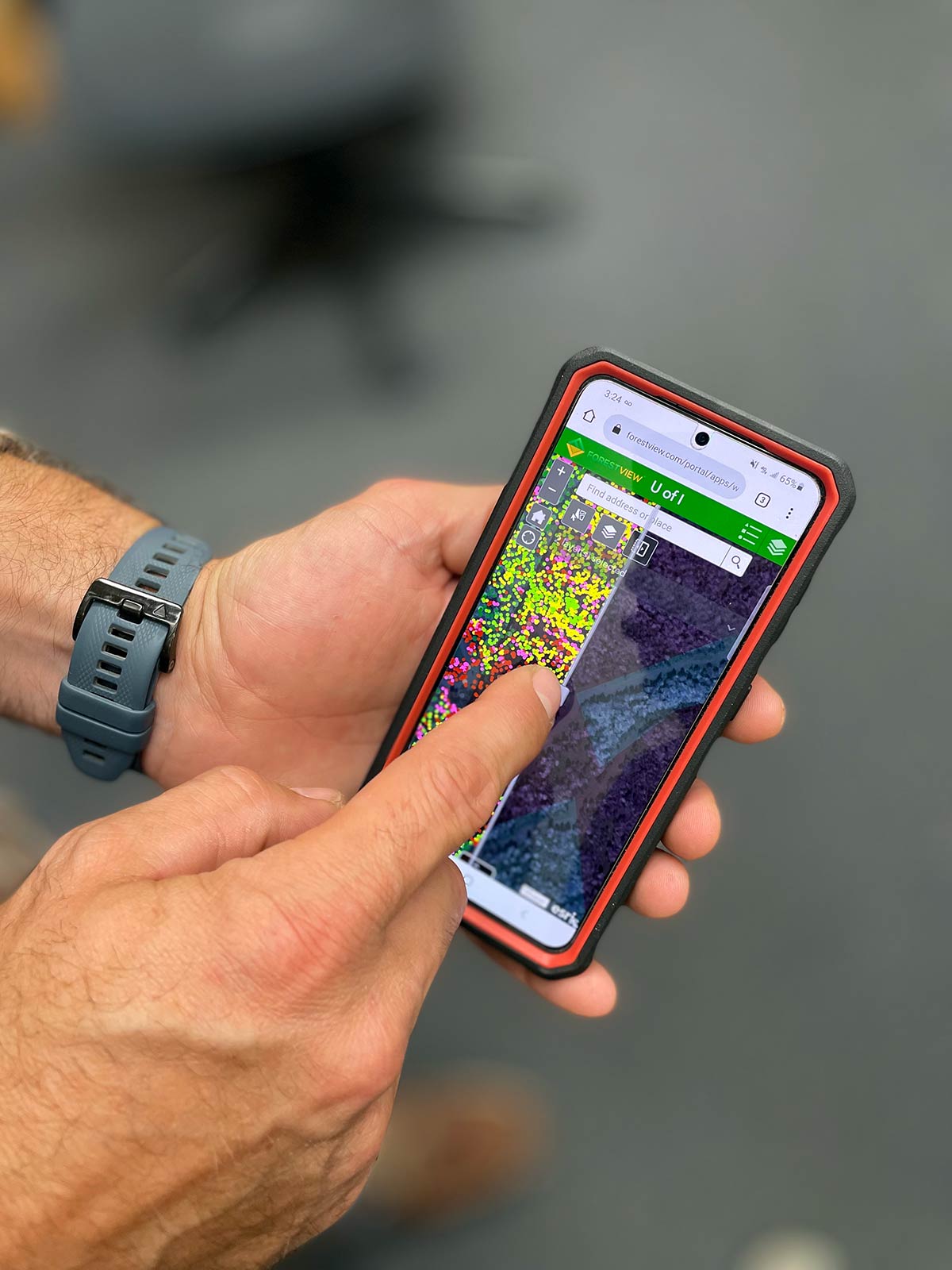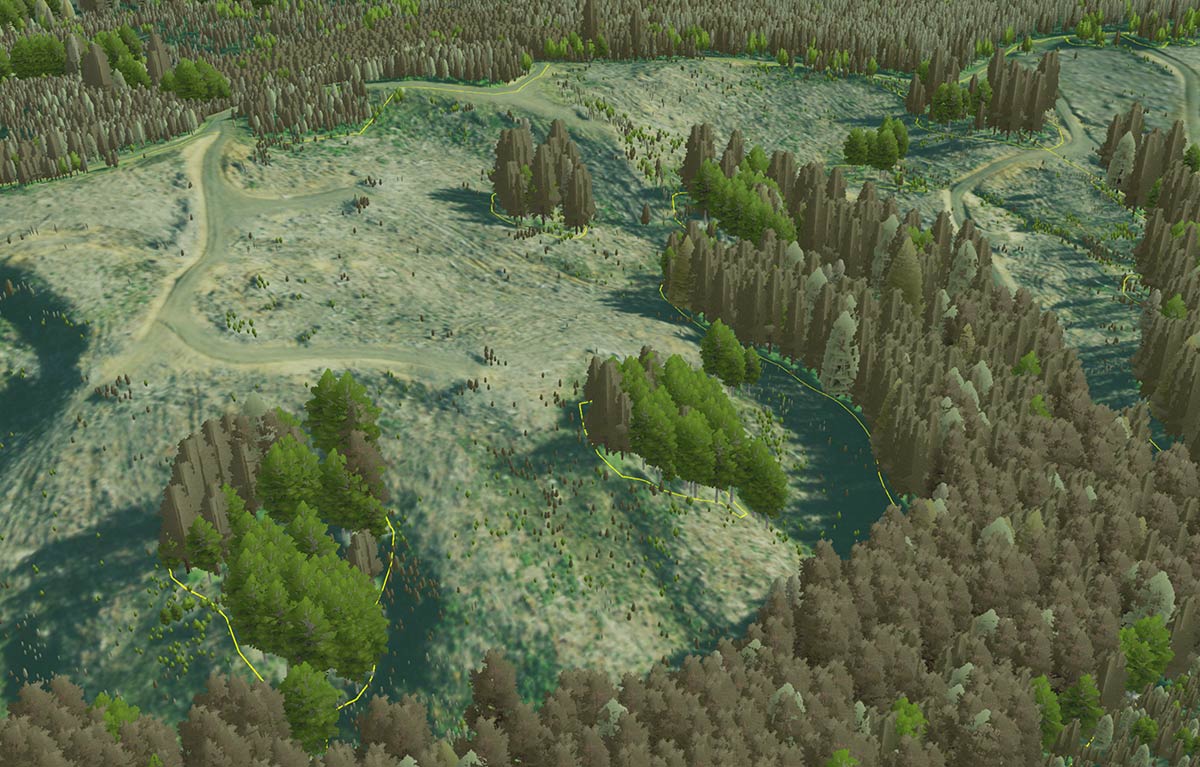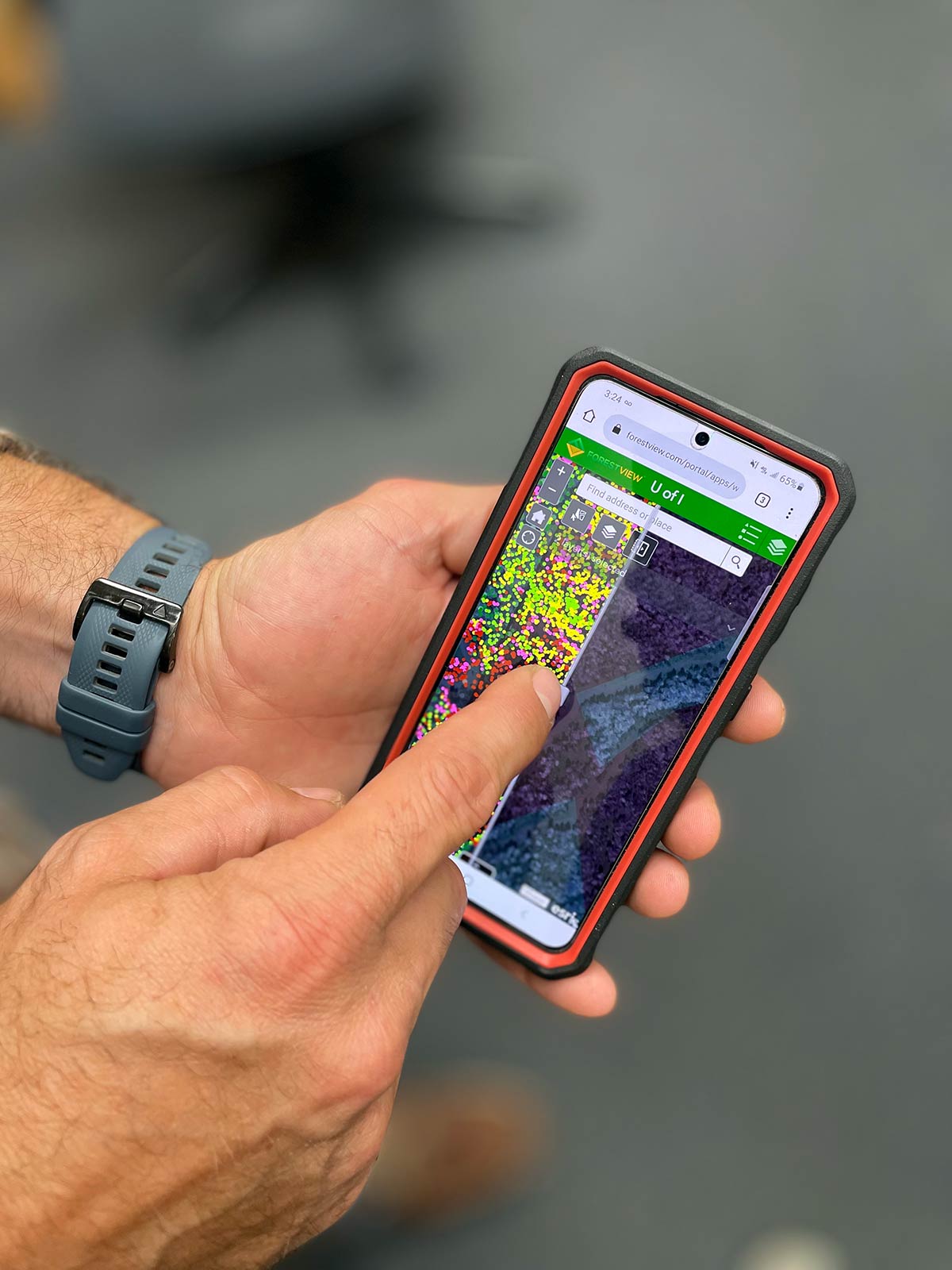Pioneering Digital Technology on the Experimental Forest
Student Managers Map Future Forestry Careers
During a summer internship at a large western timber company, forest supervisors encouraged University of Idaho senior Jordan Williams to master deciphering airborne imagery before she graduates.
The imagery, called lidar, for “light detection and ranging,” uses reflected laser energy to measure structures scanned from a drone, helicopter or fixed-wing aircraft to generate precise, 3D information about trees, brush, terrain, streams, roads and rock formations.
In her forestry classes at U of I, Williams had already learned that lidar data are used to digitize forest structure. Forest managers use this information to accurately inventory forests on a computer screen, significantly reducing time spent in the woods counting and measuring trees using traditional practices.
“A lot of traditional foresters don’t know how to use this technology,” Williams said. “It’s a generational thing. As the next generation, we’re expected to know how it works, so we can teach others.”
In the past, the industry relied on timber cruisers, foresters hired to walk plots measuring trees to understand tree dimensions, volume, species and disease. Modern foresters use lidar-produced measurements to inventory forests with much less time spent in the field.
U of I’s Experimental Forest, a 8,200-acre classroom east of Moscow, is the first in the nation to be fully digitalized using lidar. It is where students like Williams use lidar data to make decisions about timber harvesting and where a prescribed burn should occur. They also use the data to predict fire movements and estimate the complexity of logging operations.
“It helps us collect more data faster and more accurately than having boots on the ground,” Williams said. “It lets us see the species of trees in different stands, measure timber volume, the levels of vegetation from the ground to the canopy, and how much heat and humidity is stored on different landscapes.”
"It’s a generational thing. As the next generation, we’re expected to know how it works, so we can teach others." Jordan Williams, U of I Forestry Student
Northwest Management Inc. is a Moscow-based company at the forefront of lidar technology contracted by U of I to provide data on the Experimental Forest. Mark Corrao, vice-president of technology and owner, said lidar scans allow foresters to examine the landscape with greater accuracy, precision and flexibility than ever before.
“It enables more work to be completed more accurately by fewer people,” Corrao said. “You can physically see tree height, spacing, tree mortality and total forest conditions on your screen or phone in real time, so it can be used for data collection, day-to-day operations or planning.”
Because of its fully digitized forest, U of I is in a unique position to train students, Robert Keefe, director of the school’s forest, said.
“Right now, we’re the first university forest pioneering and evaluating the operational uses of Northwest Management’s technology for applied silviculture and harvest operations,” Keefe said. “This is where industry is heading. We are working with them to be out front, training our forestry students to walk onto the first day of their job understanding lidar. That means our students will be that much more useful to the company.”

The technology also helps recreational managers plan trails, wildlife biologists with habitat decisions, and fire ecologists to predict, map, and manage fuel loads and fire risks.
Forestry major James Shook, who learned about lidar in the classroom before working three months for Northwest Management, said despite lidar’s razor-sharp imagery, forest workers are still necessary to provide in-field measurements to train and verify lidar products.
“The technology is still so new that we were going out into the woods to double check the data,” Shook said. “It is really cool to see the educational side of it in the classroom and then go out and get the field experience.”
Williams considers her lidar training a necessary tool to finding employment in the quickly changing forest industry.
By learning in U of I’s indoor and outdoor classrooms how to convert lidar data to on-the-ground decisions, Williams is certain she and fellow U of I forestry students have an edge over their competitors.
“I think this gives us a huge advantage when we go out to look for jobs as foresters,” she said. “We already know how to use the technology that others are still learning about.”
Article by Ralph Bartholdt, University Communications and Marketing.
Banner photo by Rob Keefe.
Published December 2021.









